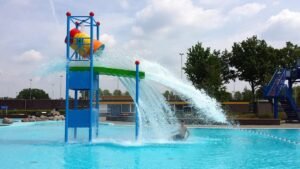How to Identify and Replace Faulty Swimming Pool Motor Parts: A Comprehensive Guide for Dubai Homeowners
Introduction
Living in Dubai, with its alluring sunshine and lavish lifestyle, often includes enjoying the luxury of having a private swimming pool. However, keeping that pool pristine requires some maintenance, especially when it comes to the swimming pool motor. A faulty motor can lead to poor circulation, inadequate filtration, and eventually a dirty pool. Understanding how to identify and replace faulty motor parts is essential for homeowners and property investors to ensure their pool remains in top shape. At Dream Floor Landscaping Services, we are here to help you navigate these waters.
In this comprehensive guide, we’ll discuss how to identify and replace faulty swimming pool motor parts, practical tips to maintain your pool motor, and much more. If your swimming pool offers a sanctuary from the heat, let’s ensure it stays that way!
Table of Contents
- Understanding the Pool Motor
- Common Symptoms of a Faulty Pool Motor
- Tools and Equipment Needed for Replacement
- Step-by-Step Guide to Inspect and Replace Parts
- Regular Maintenance Tips for Pool Motors
- When to Call a Professional
- Conclusion
1. Understanding the Pool Motor
The pool motor is the heart of your swimming pool system, responsible for powering the pump, filter, and water circulation systems. Typically, pool motors are electric and can vary in size depending on the pool’s volume and features. Familiarizing yourself with the different components helps demystify the motor’s workings:
- Impeller: Responsible for the movement of water through the pump.
- Diffuser: Guides water into the impeller.
- Motor Shaft: Connects the motor with the pump.
- Capacitor: A component that starts the motor and helps it run smoothly.
By knowing these parts, you can better troubleshoot issues when they arise.
2. Common Symptoms of a Faulty Pool Motor
Recognizing the symptoms of a faulty pool motor early can save you both time and money. Here are some common signs:
- Unusual Noises: Inconsistent grinding, whining, or humming sounds can indicate a problem with the motor or impeller.
- Reduced Water Flow: If the water isn’t circulating well or is at a low flow rate, it might be due to motor malfunction.
- Overheating: If the motor is excessively hot to the touch, it could signal electrical issues or blockages within the pump.
- Frequent Tripping of Circuit Breaker: If the motor keeps tripping the circuit breaker, it could point to electrical faults.
- Vibration: Excessive vibrations indicate that the motor is unbalanced, which can lead to more severe damage.
3. Tools and Equipment Needed for Replacement
Before you embark on replacing any parts, gather the necessary tools and equipment to make the process easier:
- Screwdriver Set: For removing motor housing and components.
- Multimeter: To check electrical connections and voltages.
- Wrench Set: For loosening and tightening bolts.
- Replacement Parts: Ensure you have the required motor parts, such as capacitors, seals, and o-rings.
- Lubricant: For greasing the motor bearings.
Having the right tools and parts at your disposal simplifies the repair process and decreases downtime for your pool.
4. Step-by-Step Guide to Inspect and Replace Parts
Step 1: Safety Precautions
- Turn Off Power: Always disconnect the power supply to the motor before beginning any inspections or repairs.
- Drain Water: Lower the water level in the pool to minimize flooding the work area.
Step 2: Inspect the Motor
- Visual Inspection: Look for signs of wear and tear, leaks, or rust, which may indicate part failures.
- Check Connections: Use your multimeter to ensure that the power is flowing through the connections.
Step 3: Access the Motor
- Unscrew the Motor Housing: Carefully unscrew and remove the motor housing to gain access to the internal components.
Step 4: Identify Faulty Parts
- Check the Capacitor: If the motor isn’t starting, the capacitor may be the culprit. Test it using a multimeter.
- Examine the Impeller: If you hear noise but feel little water movement, the impeller may be damaged or blocked.
Step 5: Replace Faulty Parts
- Capacitor Replacement: Disconnect the wires from the old capacitor and wire in the new one, ensuring secured connections.
- Impeller Replacement: Remove the old impeller, ensuring to clean out any debris, and install the new one in its place.
Step 6: Reassemble and Test
- Reattach the Housing: Once all parts are replaced and inspected, reattach the motor housing and any covers.
- Reconnect Power: Plug in and turn on the motor to test its performance. Listen for any unusual noises and check for leaks.
5. Regular Maintenance Tips for Pool Motors
Preventative maintenance can prolong the life of your pool motor and minimize costly repairs. Here are some tips:
- Regular Cleaning: Keep the motor-free of debris and dirt to ensure efficient operation.
- Routine Inspections: Check components monthly for signs of wear or damage.
- Lubrication: Regularly lubricate bearings and ensure all moving parts are functioning smoothly.
- Check Electrical Connections: Inspect and tighten electrical connections to prevent shorts and overheating.
- Monitor Functions: Pay attention to how your pool operates daily. Note any changes in sounds, flow, or performance.
6. When to Call a Professional
While many pool motor repairs can be handled by an experienced homeowner, don’t hesitate to call a professional when:
- Electrical Issues Arise: If you suspect electrical problems, it’s best to consult a qualified technician.
- Significant Damage: If parts are severely damaged, replacement may not be a viable option.
- Safety Concerns: If you’re unsure about any step in the repair process, it’s safer to reach out for help.
At Dream Floor Landscaping Services, our experienced technicians are just a call away. You can reach us at +971563787002 for expert assistance with any of your pool motor needs.
7. Conclusion
Understanding how to identify and replace faulty swimming pool motor parts is essential for maintaining a clean and vibrant swimming pool. Whether you’re a homeowner in Palm Jumeirah or a property investor in Dubai, keeping your pool motor in good working order ensures your oasis remains a source of joy.
Regular inspections and maintenance can go a long way in preventing costly repairs down the line. However, if you ever feel overwhelmed by the process, remember that expert help is available. Don’t hesitate to contact Dream Floor Landscaping Services at +971563787002 for all your pool maintenance needs.
Dive into the joy of swimming with peace of mind, knowing that your pool motor is operating at its best!





